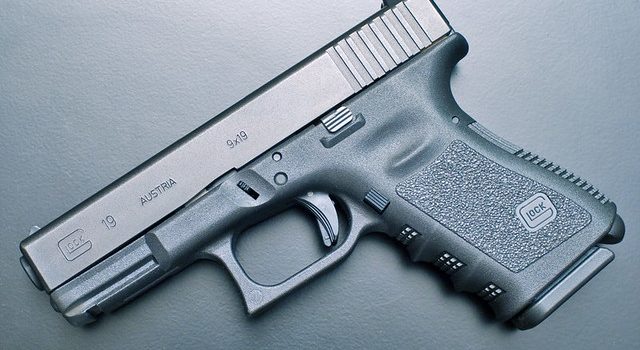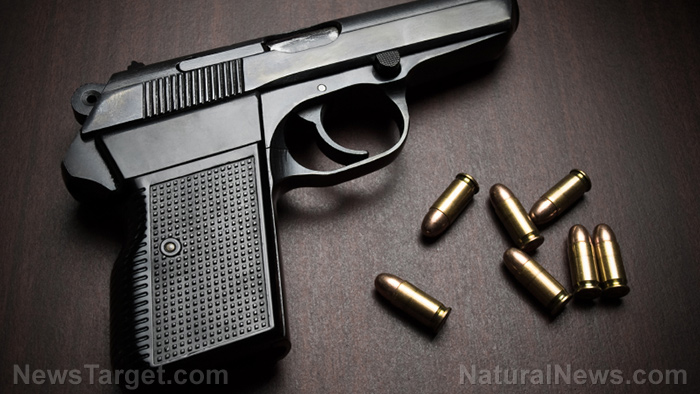I’m Unarmed — What Gun Do I Buy?
by Frog, Survival Blog:

You’re sitting at home with your family in a suburb at what is normally a comfortable distance of 30 to 60 minutes from your nearest major city. Life feels as normal as it can — quarantine being considered — and your dinner is interrupted by the news that there is is rioting in the adjoining city. Then, the country is rioting; finally, international cities are rioting. You’ve been aware of the need preparedness for some time, but you find yourself without a firearm. What do you do?
This article will be intended for survival-minded folks living in the ‘burbs who either have no experience with firearms, or very limited experience. As a blanket statement to get out of the way right now: ANY safe, functional firearm is better than none. Doubly so, any firearm you are comfortable and confident with is (generally) better than one you don’t know how to use. I do not claim any kind of authority over the knowledge being presented, and even if this only prompts people to buy firearms I’m not recommending, I can sleep soundly knowing it helped somebody take the plunge to protect their family and property.
Also please note that, of course, firearm choice for somebody in a deep-urban versus rural setting would of course have different priorities. As someone who grew up and remains a suburbanite (though, thankfully living farther out than I used to be), this is simply the area I feel I know best.
YOUR FIRST GUN
In general, if somebody can only purchase one firearm and lives in the suburbs, my first recommendation would be for them to acquire a high-capacity semi-automatic handgun of their preferred flavor. Before anybody shouts through the keyboard, I wholeheartedly agree that it would be preferable to start with a .22; however, if somebody has a small budget and truly can only afford a single weapon while the country is in or on the edge of true unrest, I believe a centerfire option is permissible. That being said, if you can afford multiple guns, then GET a .22 FIRST!
In absolute no particular order, here are a few brands that you may wish to consider: Smith and Wesson M&P Series, Glock (19, 17, 22, 23, etc), Springfield Armory XDm, FN, CZ, HK, the list goes on. Most of these will be approximately $400-to-$550 depending on what level of dealer markup is occurring at the time you buy. Less expensive options of reasonable quality certainly exist, but if you’re only going to have one firearm, I suggest doing all you can to purchase a mainline brand to have the best parts and magazine availability possible.
Why a handgun? Succinctly: I’m a family man. If I’m called upon to defend my home, there’s a very high probability I will need to move or direct my wife and children, open doors, issue commands, or otherwise make use of my hands. A pistol with modern ammunition will offer relatively high capacity, adequate terminal ballistics, and an acceptably low risk of over-penetration through drywall. While becoming skilled with a handgun takes more practice than some other firearms, at home-defense distances, my experience lends me to believe it is intuitive enough to use for novices to achieve acceptable results – though this is, obviously, no excuse not to train! Practice every aspect of loading, unloading, pointing, drawing, reholstering, andsafely dry firing the gun.
Under normal circumstances, I would recommend a new shooter start with a 9mm chambering. Why? You’ll be offered high capacity, relatively low recoil, and cheaper ammo than its main competitors. That being said, I recently had an experience I want to advise prospective buyers of: While visiting family, the riots kicked off. I had all of 100 rounds of 9mm with me, half of which I’d fired while shooting with my father a few days prior. Upon going to two different local big-box outdoors stores, I was not able to find ANY 9mm ammunition. I had to travel to a gun store elsewhere, which had about ten boxes total right as the doors opened; I am certain it’s all gone, by now. However… there were still literal buckets and cases of .40 S&W and .45 ACP available at each store. In a “panic” situation, or perhaps a panic-adjacent one, it would absolutely be worth choosing the cartridge that has ammunition available. While I love my Glock 19 and my Browning Hi-Power, if I found myself without guns and only .40 S&W on shelves, you’d best believe I’ll go with the .40.
[JWR Adds: One low cost option that provides flexibility for times of ammo shortages is to buy a police trade-in Glock Model 22 or Model 23 chambered in .40 S&W, and also immediately buy a second barrel in 9mm for it, with a set of magazines, to match. That would not be much more expensive than buying a new Glock Model 17 or Model 19 chambered in 9mm. So you are in effect getting two guns for the price of one.]
To go along with your handgun, I recommend purchasing as many OEM magazines as you reasonably can, along with a quality weaponlight (I like Streamlight and Surefire), and a kydex or reinforced leather holster. You may also wish to purchase a second holster dedicated to concealment, which should also be kydex, reinforced leather, or a hybrid of the two; nylon and similar holsters are affordable, and certainly better than no holster, but I prefer the draw of holsters with reinforced mouths and no snaps, buckles, or other items. Your Mileage May Vary (YMMV). Magazine pouches are also worth purchasing, if budget allows.
Refer to the ballistic tests on various ammo from Lucky Gunner.
For my personal, perhaps non-objective preference, I like to have 18″ of gel penetration or more to ensure well-placed shots will go as far as they need to. Most minimum recommendations seem to be in the 12″ range.
YOUR SECOND GUN
If your budget and market availability allows, then the next firearm I would recommend to somebody in the suburbs staring down unrest would be a high-capacity, intermediate cartridge, centerfire rifle. In general, your most cost-effective option would be an entry-level AR-15, but several other options include: AK variants, Mini-14/30, the Kel Tec SU-16 series, and others.
Why a rifle? In my opinion, which appears to be echoed in the woeful mainstream media and social media alike, these rifles are one of the most intimidating options available to deter would-be looters and criminals from entering your neighborhood. Of course, it’s also one of the most effective and versatile firearms a free man can own; in many states, you’ll also be able to legally hunt with them, though that topic is suited for its own article.
Since this will usually mean an AR-15, here are a few items to watch out for that I would generally not recommend: Polymer and hybrid lower receivers (beware – these are often the cheapest!), because the code does not appear to be cracked as of yet on making them acceptably rugged, outside of the GWACS/CAV Arms style one-piece lowers; railed sight blocks (you will find it very difficult to both find a quality iron sight that is the right height, and also to zero said sight); and, excepting cases where no other option is available, AR-15s chambered in rifle cartridges other than .223. Again, availability dictates what you’ll have access to; .300 BLK is certainly a fine round, but more expensive and uncommon than .223 under normal conditions.
To go on your rifle, I would recommend iron sights and a sling as minimum requirements. A sling is to a rifle what a holster is to a handgun – and of course, you need to be able to fire accurately, so a sighting system is a must. As of writing, the most affordable iron sights I feel confident recommend are MagPul’s MBUS sights, though many entry-level AR15s will come with a permanently affixed front sight, saving you a few bucks.
For slings, I recommend either an inexpensive 2-point sling, or the MagPul MS2/3 type slings (though using them as intended will also require you to purchase and install a “sling plate,” so you may save this upgrade for later). I also strongly recommend a weaponlight for the rifle; the Streamlight Polytac is affordable and durable, and I have owned several of these without issue. Of note, even the standard mil-spec handguards on baseline ARs can have inexpensive rail sections added to accommodate a weaponlight.
If you can afford an optic to place on it, I recommend a red dot for beginners. There are many good brands available; I would implore you to choose one that has good battery life (meaning you can always leave it on), or one that doesn’t require batteries at all. Of course, you’ll also want as many magazines as you can get your hands on; for AR-15s, I prefer MagPul PMAGs, though many other good options exist.
Regarding ammunition: However much you think you need, get more. I would recommend getting at least 250 rounds of handgun ammo and 1,000 of rifle ammo to start, though your budget will dictate what is realistic for you. Purchase a proper ammo can or two to store the rounds and keep them safe from the elements. For handguns in particular, try to get enough high-quality self-defense ammunition to load all of your magazines.
HONORABLE MENTION – BUDGET SHOTGUN
Why not a shotgun in my number one spot? Simply put, I think most novices will have a hard time using it well under stress, excepting simpler single-shot or double barrel guns. Additionally, my experience with panics is that because most stores only stock a small amount of buckshot, it’s generally all gone during unrest. That being said – a decent, used pump-action 12 or 20 gauge shotgun can be as little as $150 from a pawn shop, and will be absolutely lethal. If available, I recommend 00 buckshot, though #4 may be easier to find once the buckshot is picked through. Please note that 00 buckshot goes through a significant amount of drywall, so check your backstop – and PRACTICE!


